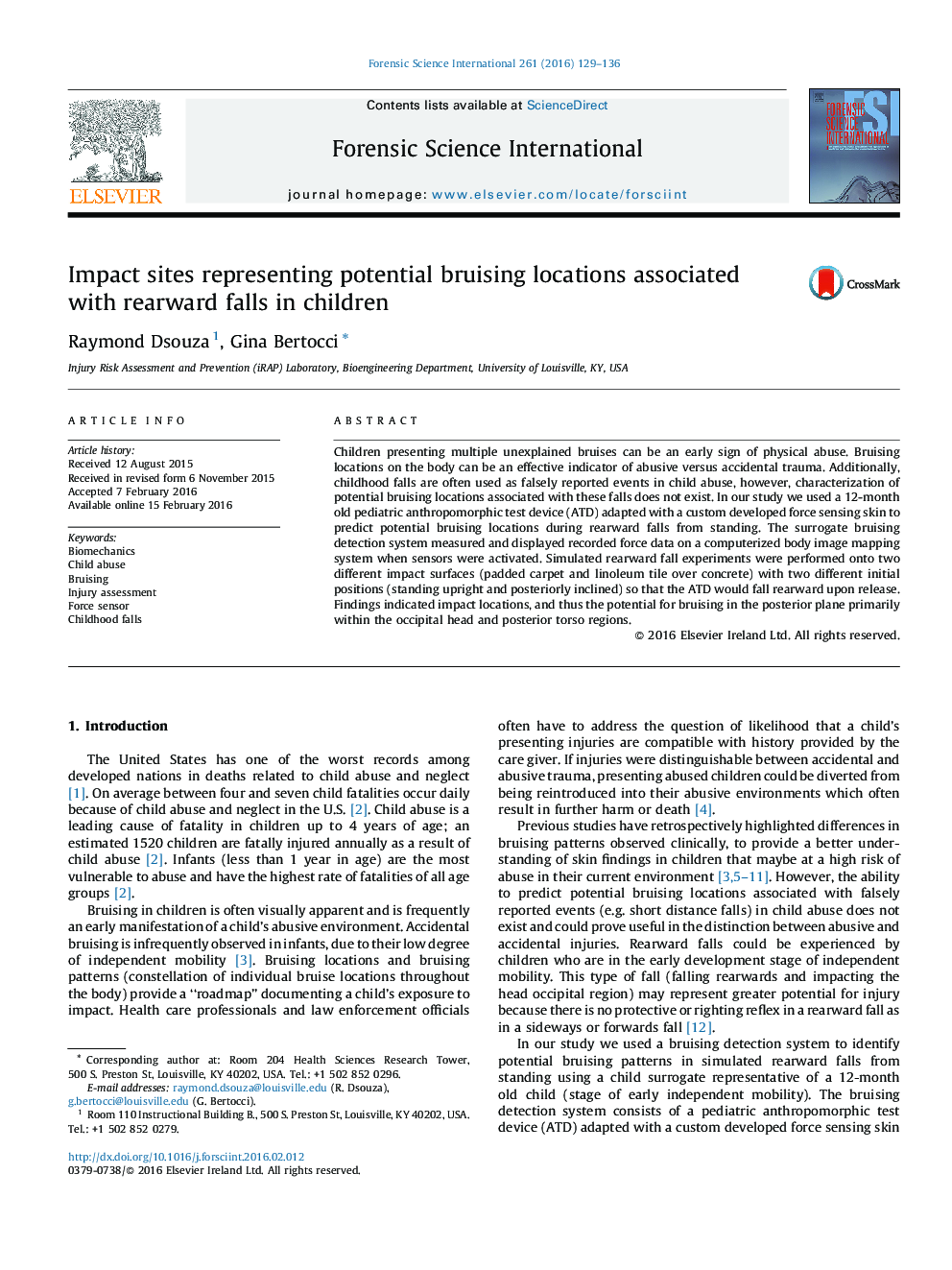| کد مقاله | کد نشریه | سال انتشار | مقاله انگلیسی | نسخه تمام متن |
|---|---|---|---|---|
| 95176 | 160417 | 2016 | 8 صفحه PDF | دانلود رایگان |
• Impact locations, and thus potential for bruising primarily in the posterior plane.
• Occipital head and posterior torso were the two common impact regions.
• Mean peak head force (1995 N ± 162) was highest in upright falls onto concrete.
• Mean peak torso force (1050 N ± 154) was highest in upright falls onto concrete.
Children presenting multiple unexplained bruises can be an early sign of physical abuse. Bruising locations on the body can be an effective indicator of abusive versus accidental trauma. Additionally, childhood falls are often used as falsely reported events in child abuse, however, characterization of potential bruising locations associated with these falls does not exist. In our study we used a 12-month old pediatric anthropomorphic test device (ATD) adapted with a custom developed force sensing skin to predict potential bruising locations during rearward falls from standing. The surrogate bruising detection system measured and displayed recorded force data on a computerized body image mapping system when sensors were activated. Simulated rearward fall experiments were performed onto two different impact surfaces (padded carpet and linoleum tile over concrete) with two different initial positions (standing upright and posteriorly inclined) so that the ATD would fall rearward upon release. Findings indicated impact locations, and thus the potential for bruising in the posterior plane primarily within the occipital head and posterior torso regions.
Journal: Forensic Science International - Volume 261, April 2016, Pages 129–136
